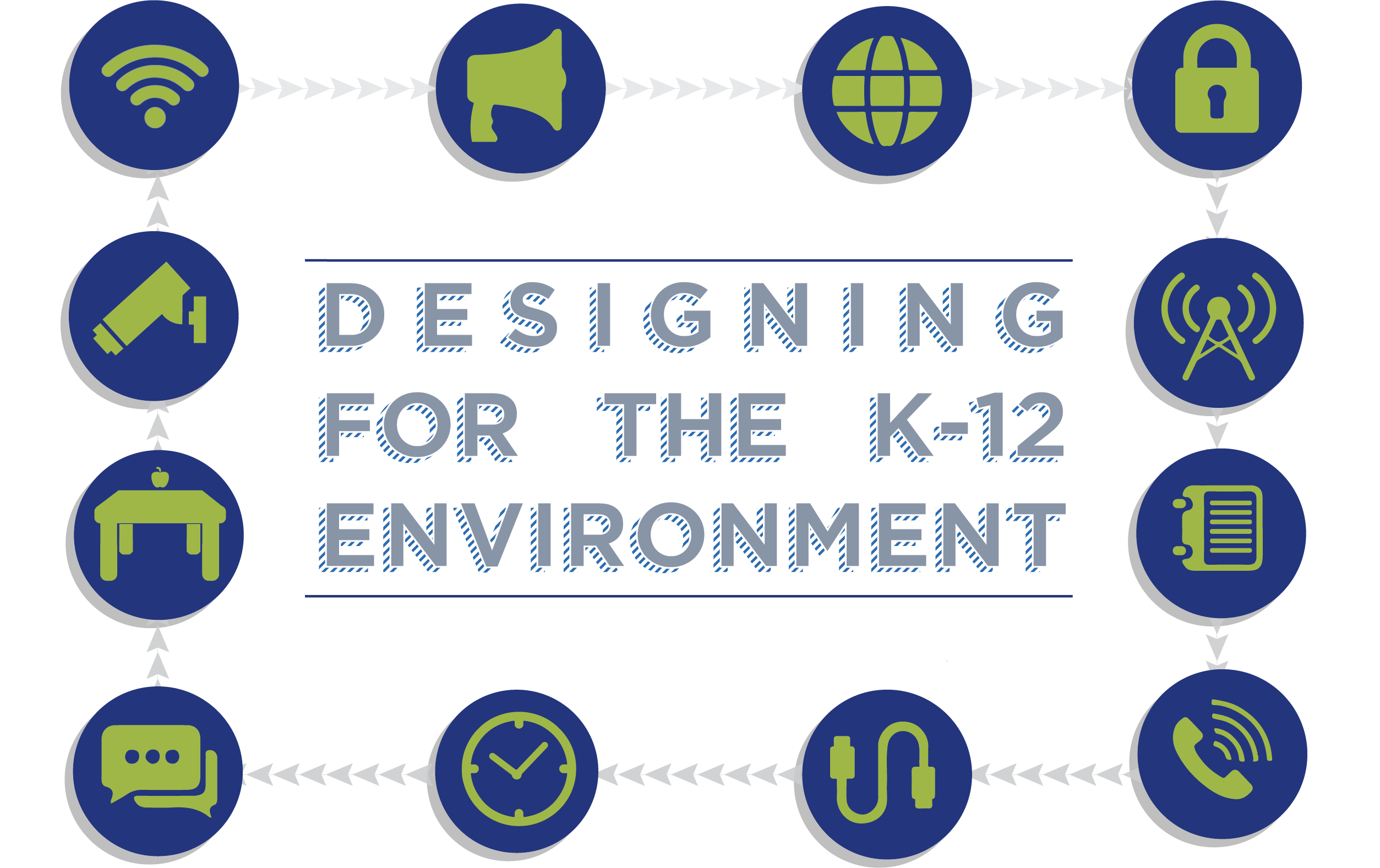Standards and Structured Cabling Systems
Most district IT professionals recognize the importance of the physical infrastructure that provides the actual transport of information, but their first responsibility is to keep the environment running. That means their focus is primarily on desktop computers, file servers, active electronics, and the software required to facilitate connectivity. While IT staff typically do an admirable job in specifying a standard for Operating Systems and desktop applications, they often lack expertise when it comes to the design of the physical components of a network. For those who do have a strong understanding of the physical components, there may not be enough time to stay current with the continually evolving standards for these systems.
The leading North American authority on connectivity standards is the Telecommunications Industry Association (TIA) based in Arlington, Virginia. TIA is accredited by the American National Standards Institute (ANSI) to develop voluntary, consensus-based industry standards for telecommunications connectivity. These include:
- Telecommunications Infrastructure Standard for Educational Facilities
- Telecommunications Infrastructure Standard for Data Centers
- Telecommunications Cabling Standards for Structured Cabling Systems
- Commercial Building Standards for Telecommunications Pathways and Spaces
- Commercial Grounding and Bonding Standard
These standards provide recommended practices for the design and installation of cabling systems that will support a wide variety of existing and future services. Initially, the standards were anticipated to provide a lifespan for cabling systems in excess of 10 years. This effort has been largely successful, as evidenced by the definition of category cabling in 1991 which lead to standardization of cable infrastructure, much of which has been in continual operation for more than 20 years.
TIA continues to refine and enhance connectivity standards, and all contemporary design includes reference to TIA standards in terms of type, density, and performance of telecommunications transport systems.
Why a Telecommunications Design Consultant?
Early telecommunications designs in new construction or major remodels were usually relegated to electrical engineers, as project architects were either unfamiliar with structured cable systems or simply wanted to provide connectivity with as little effort and cost as possible. Not surprisingly, these designs often had poor placement of telecommunications rooms, lack of space for equipment, and no thought to expansion. In fact, many were out-of-date before the building was even complete – leading to frustration for IT staff who had to come up with “Band-Aid” fixes to provide connectivity.
While electrical engineering firms are capable of good design, designing intelligent telecommunications systems is typically not their primary business. The telecommunications component has evolved to encompass the most complex systems within a building. It is no longer simply “voice and data,” but rather a full range of intricate components that includes all applications delivered over IP. Proper design requires a very specific set of skills to address the integration of voice, data, video, access controls, overhead paging, clocks, wireless, classroom technologies, and intelligent building control systems.
A competent telecommunications design requires that the designer spend time with the staff who will eventually be using and maintaining the system. A thorough understanding of current needs and concerns, coupled with forward thinking design methodology, ensures a design that supports today’s technology as well as innovations that will most certainly come during the lifetime of the telecommunications cabling system.
Designing for the K-12 Environment
Fully understanding the K-12 technology environment requires attention to the trends in wired and wireless connectivity that will impact both academic and administrative computing components. Most districts need to support a dual network environment simultaneously and maintain separate sets of credentials for students and staff, as well as providing a “guest” environment to allow parents and visitors to wirelessly access public networks. At a minimum, K-12 design should include:
- Classroom cable cabling for:
- Wired work areas
- Projection
- Sound reinforcement
- Wireless with building saturation density
- Specialized classroom configurations
- Connectivity for common spaces
- Public address system
- Mass notification system
- Paging
- Clocks
- Scheduling system
- Access control system
- Security
- Perimeter – parking lots and recreational areas
- Exterior doors
- Interior spaces
- High-value areas
- Video surveillance
- Voice system
There are currently 50 specification sections in Division 27 and 28 in Construction Specifications Institute MasterFormat™ (2004 edition)[1] that could be required in new K-12 construction, as well as six in Division 8, required for coordination with doors using a contemporary access control system. As new technologies such as IP based automation and monitoring merge with traditional elements in intelligent building systems (IBS), the coordination of voice/data/video will play an even larger role.
It is critical that every project be individually assessed and the specifications crafted to fit. Too often, especially with publicly funded projects, not enough time is allocated to accurately develop telecommunications specifications, and only minimal requirements are defined. Not surprisingly, the results are far less than desirable. Even more disappointing are projects in which telecommunications cabling and infrastructure are relegated to “performance specifications” that have very limited technical criteria – leading to significant change orders late in the construction process, and resulting in expenditures equal to (or even greater than) the cost of engaging a telecommunications expert to properly design the system at the onset.
As K-12 construction projects continue to grow more sophisticated in the future, it will require vendors with expertise not only on the technical side, but in IBS design and installation. A tailored approach that views each project as an intelligent building will help assure integration without duplicating costs for separate pathways, active electronic equipment, and transport systems.
A solution that works for K-12
Most K-12 districts are limited by increasing budget constraints, with IT and facility departments that are already running as lean as possible. The thought of tackling a technology project of this magnitude is not only daunting; it’s virtually impossible with staff who are stretched to the limit in order to simply maintain daily services.
A more workable solution is to engage the services of a consulting firm, particularly one that specializes in and understands the unique technology and telecommunications needs of K-12. With deep and relevant experience, they can suggest alternative solutions for less cost and less risk, and generate multiple equipment bids to ensure the best value for the available budget.
With thorough assessment, planning, design, procurement, and management of projects, a knowledgeable partner can help facilitate the most timely and cost effective deployment of integrated technology for K-12 clients.
By Glenn Sexton
[1] MasterFormat™ is the specifications-writing standard for most commercial building design and construction projects in North America. It lists titles and section numbers for organizing data about construction requirements, products, and activities. By standardizing such information, MasterFormat facilitates communication among architects, specifiers, contractors and suppliers, which helps them meet building owners’ requirements, timelines and budgets.



